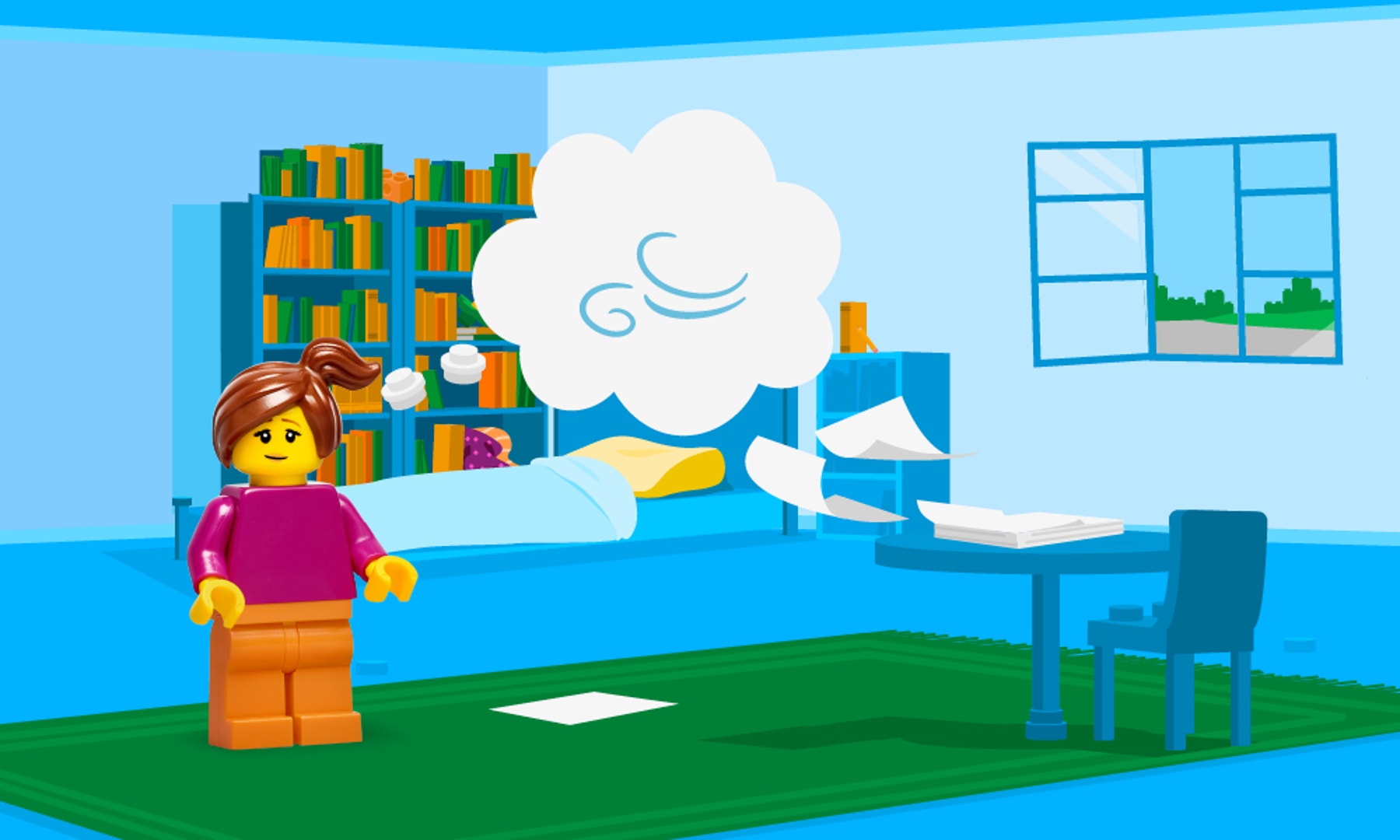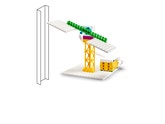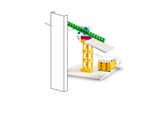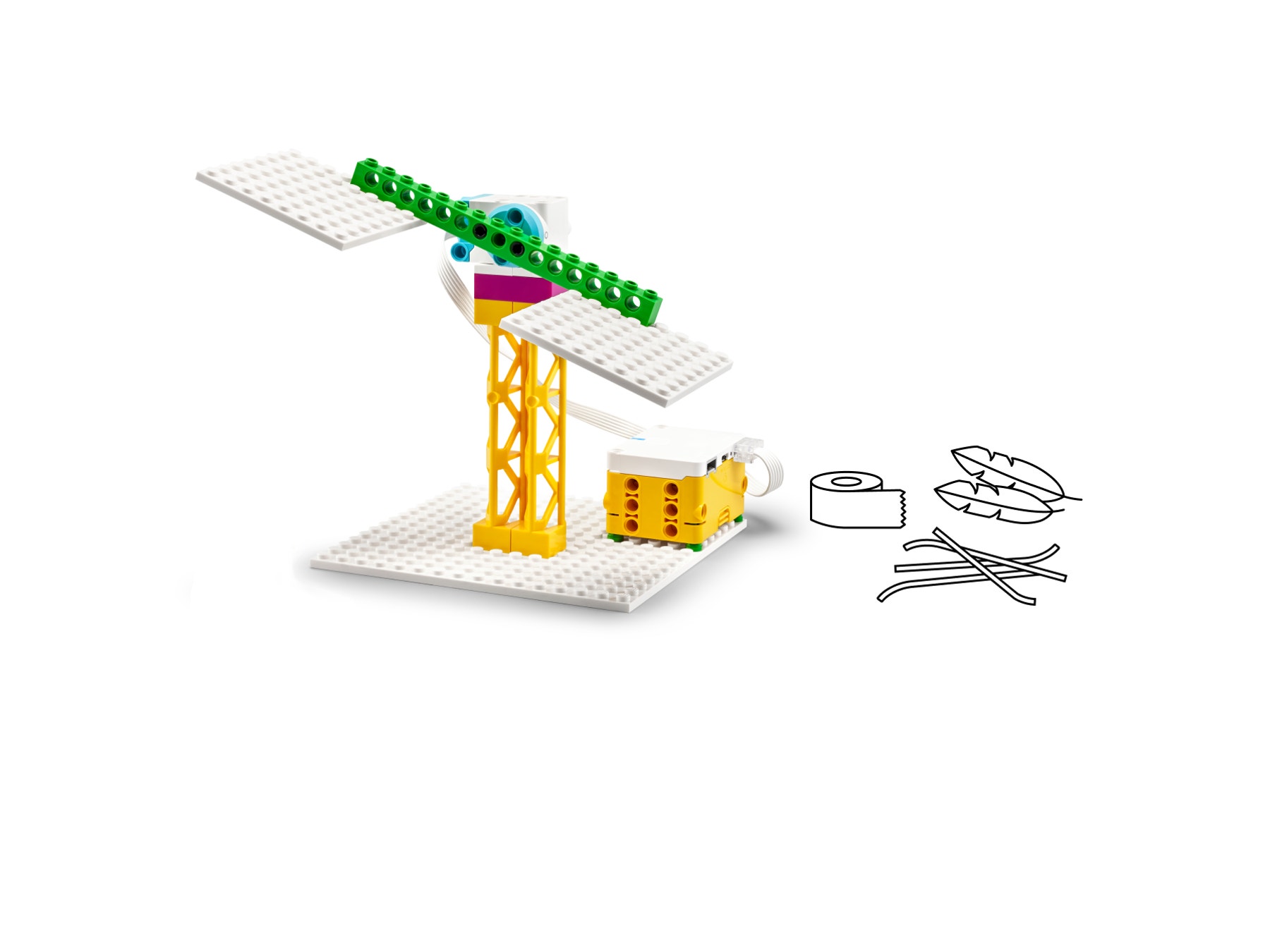Matter
Maria notices that when she opens the window, her papers blow around the room. How does that happen?

Prepare
*(NOTE: This lesson contains a Part A and a Part B. Both are important to access the full learning of the curriculum. If time is limited, review both parts to choose elements that meet your pupils needs.)
In this lesson, pupils will build a fan, using the example image(s) for inspiration. Encourage them to design and build their own idea for a fan.
- Science Background - Matter:
- Matter refers to the substances from which objects are created.
- Matter has mass and takes up space in solid, liquid or gas form.
- Build pupils' prior knowledge - Matter: Using your core science materials, share information, images and definitions.
- Wind is moving air. Air, like all matter, is made up of physical particles too small to see. (Note that pupils do not need to know about molecules or the types of gases that make up air. Pupils do not need to understand the particle model in detail.)
- Key vocabulary: matter, air
- Building and Programming Experience: Review the suggestions in the Unit Plan. For this lesson, you may also want to:
- Reinforce with the Motor tutorial in the SPIKE App Start menu.
- Use the Event and Sensor Blocks sections of the Help>Word Blocks menu in the SPIKE App to provide more support.
- Materials: Make paper towers with these steps: 1) Cut each sheet of copy paper lengthwise in thirds. 2) For each one-third sheet created, fold both long sides to form a bracket shape. 3) Confirm that the paper stands upright when undisturbed and falls over with a light breeze (see template). If you wish, have pupils create their own paper towers during the lesson.
PART A (45 minutes)
Engage
(Whole Class, 10 minutes)

Introduce the story’s main character(s) and the first challenge: Maria notices that when she opens the window, her papers blow around the room. How does that happen?
THINK – Facilitate a brief discussion about the lesson topic(s)
- What is air? Is it just empty space? (No, air is made up of particles too small to see.)
- What evidence do you have from everyday life that air is not just empty space? (Examples will vary. Pupils may mention inflating balloons or tyres, breathing in and out, feeling the wind blow, etc.)
Distribute a LEGO® Education SPIKE™ Essential Set and device to each group.
Explore
(Small Groups, 25 minutes)
As pupils work, consider sharing the examples below as support for building and programming. Clarify that the images show one idea and pupils should design and build their own fan idea.
Have pupils:
- Use the base model to BUILD a fan that can make a breeze to blow over a paper tower.
- PROGRAM their model to make the fan blades spin, starting with a speed of 100%. They can test and observe the effect of the fan’s performance by positioning the paper tower 1) in the front, 2) at one side, or 3) at different distances from the fan.
- Test if their model can knock over the paper tower.
- Redesign and retest as necessary.
Facilitate brainstorming about ways to use LEGO elements to create effective fan blades that blow over the paper tower.
Halfway through work time, have pupils exchange ideas using a familiar classroom routine and then update their models with inspiration from sharing.
Example Ideas
.png?locale=en-gb&auto=webp&format=jpeg&width=216&height=124&quality=90&fit=bounds)
.png?locale=en-gb&auto=webp&format=jpeg&width=216&height=124&quality=90&fit=bounds)



Explain
(Whole Class, 10 minutes)
Gather pupils for sharing.
Have each group use their model to demonstrate and explain how their fan:
- Is able to move air particles.
- Can blow over a paper tower without touching it.
Invite pupils to share how they updated their model to improve its performance.
If you wish to continue to Part B – Explain, have pupils keep their models intact or allow time for rebuilding.
PART B (45 minutes)
Explain
(Whole Class, 10 minutes)
- Repeat the steps from Part A – Explain to have additional groups demonstrate and explain their learning.
Elaborate
(Whole Class, 30 minutes)
(5 min) Share background to help pupils Elaborate: Cardboard or other materials might make more effective fan blades than LEGO pieces because they can push more air.
(20 min) Have your pupils iterate and test their models to complete the next challenge in the app: Use cardboard or other materials to design a better fan blade. Test your fan again. What happens?

- (5 min) Invite pupils to share knowledge, ideas or skills that:
- Helped them complete the challenge or what they learned while building.
- Have pupils clean up the sets and work areas.
Evaluate
(Whole Class, 5 minutes)
- Ask guiding questions to elicit pupils’ thinking and their decisions while developing ideas, building and programming.
Observation Checklist
- Review the learning objectives (Teacher Support box).
- Use the checklist to observe pupils’ progress:
- Their fan can blow over a paper tower a short distance away.
- Their explanation demonstrates that air particles blown by the fan have pushed the paper over, even though the particles are too small to see.
Self-Assessment
Have each pupil choose the brick that they feel best represents their performance。
- Blue brick: I think I can follow instructions to create a program.
- Yellow brick: I can follow instructions to create a program.
- Green brick: I can follow instructions to create a program, and I can help a friend do it too.
Peer Feedback
In their small groups, have your pupils discuss their experiences working together.
Encourage them to use statements like these:
- I liked it when you…
- I’d like to hear more about how you…
Differentiation
Simplify this lesson by:
- Stopping after the first challenge: Build a fan model that shows air particles can knock over a paper tower. Ask pupils yes/no questions to elicit their explanation.
Increase the difficulty by: - Having pupils investigate and compare the effects of different motor speeds, e.g., the default of 75% against the max of 100%. Ask them to draw and label a diagram to explain how air and other particles of matter are affected.
Cross-curricular Learning
- Provide learning materials about the Beaufort scale, which is used to measure the force of wind. Have pupils produce an editorial or advertisement for the Beaufort scale explaining why it is useful to have a scale to measure wind rather than using people’s subjective impressions.
If facilitated, this will extend beyond the 45-minute lesson.
Teacher Support
Pupils will:
- Develop a motorised fan that is able to blow over a paper tower a short distance away.
- Explain that although air particles are too small to see, they are pushed by the fan against the paper to knock it over.
(one for every two pupils)
- LEGO® Education SPIKE™ Essential Set
- Device with the LEGO Education SPIKE App installed
- See Prepare - Materials
Year 4 States of Matter
- Pupils should be taught to compare and group materials together, according to whether they are solids, liquids or gases.
English Cross-curricular Learning
- Year 3 and 4 Reading (comprehension)
- Non-fiction
- Year 3 and 4 Writing (composition)
- Explanation